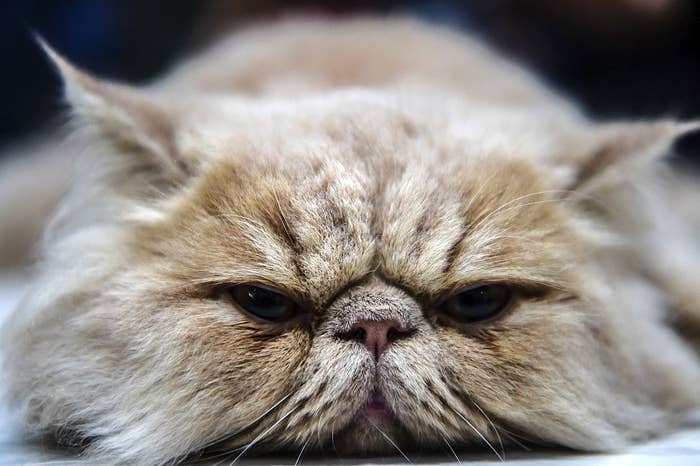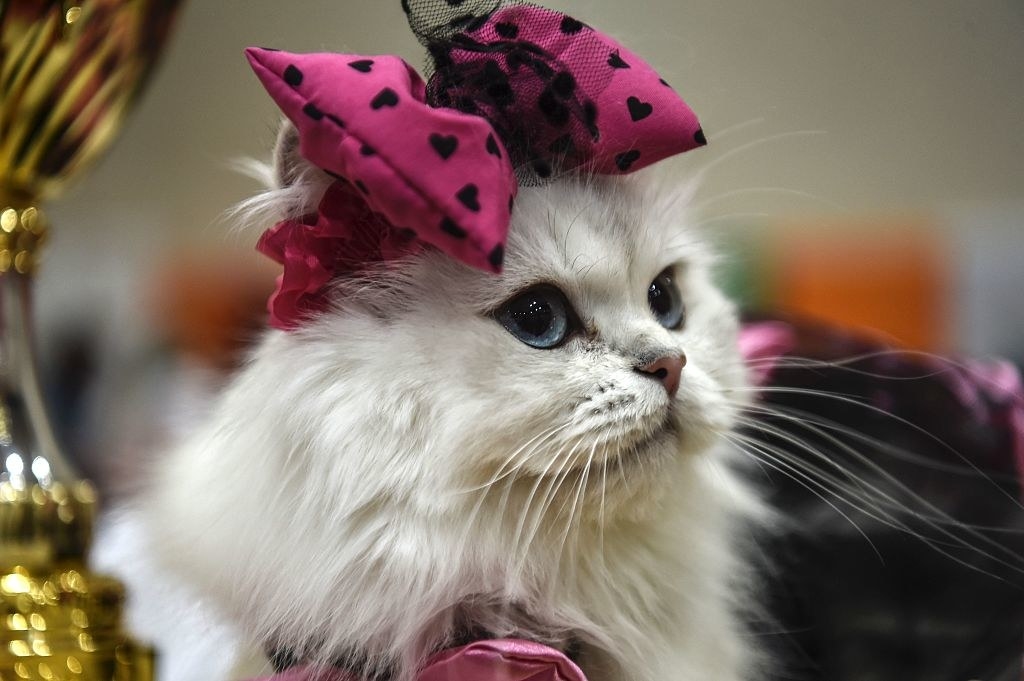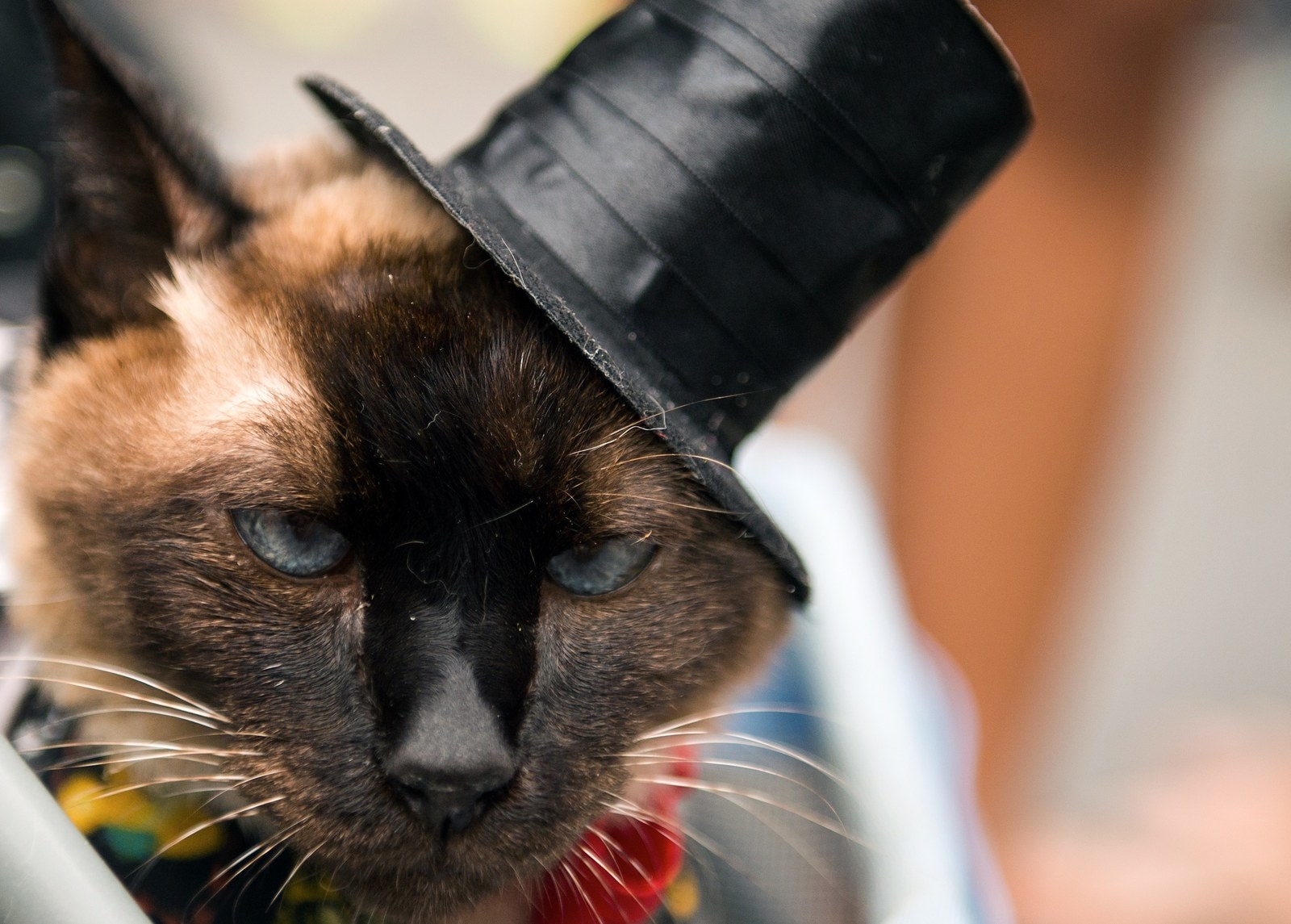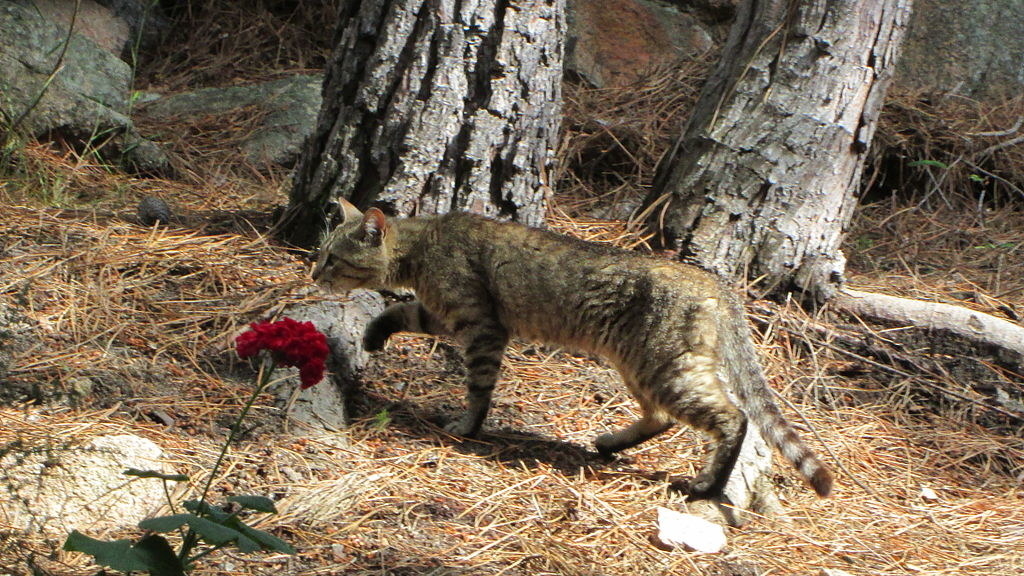This is where researchers found samples of the two lineages of cat DNA, and when those cats lived.
At some point in the late Stone Age, a wildcat wandered into a human settlement in what is now Turkey, perhaps hunting rats that were feeding off their food scraps or stores.

It would have been an African wildcat, Felis silvestris; specifically, a member of the subspecies Felis silvestris lybica, which domestic cats are descended from. It would have looked pretty much like a modern cat, to the untrained eye.
Of course, it probably happened dozens or hundreds of times. But presumably there was a first time.
It was the start of a relationship between the two species that has lasted about 10,000 years and taken domestic cats to every continent on earth.
Apart from Antarctica, because obviously. But everywhere else.
Now a new study has fleshed out the story of how humans and cats came to live together in more detail.
The study is by scientists from the University of Leuven, Belgium, and the University of Paris Diderot in France, and is published in the journal Nature Ecology & Evolution. "It's the first large study of ancient cat DNA," Dr John Bradshaw, a zooanthropologist at the School of Veterinary Sciences at Bristol University and author of Cat Sense: The Feline Enigma Revealed, who did not work on the study, told BuzzFeed News. "I think they've got it right."
What this research has done that's really different is it's looked at the DNA from the remains of cats in the ancient world – from Stone Age Turkey, and ancient Egypt, and the Roman empire, and other places and times.

The most authoritative previous study had used the DNA of modern cats, looking at how it was distributed, to try to work out how they had spread around. But that brings complications, because the ancestors of domestic cats still live in the areas that we think cats were first domesticated, and interbreed with other cats. So to trace the ancestry of domestic cats can be difficult with wildcat DNA muddying the picture.
"The genes of the domestic cat will be almost identical to those of the wild ones," Dr says Bradshaw. "So it’s hard to tell from modern DNA where domestication took place, if the ancestor is still living there." The new research took ancient cats, including mummified ones from Egyptian tombs, and examined their DNA.
And it's shown something that was not previously known – that cats were (probably) domesticated not once, but twice. The first time was the one we mentioned above, in ancient Turkey.

But looking at the cats' DNA, the team showed that there were two distinct groups, or lineages. One of them was the same as the ones found in ancient Turkey, but the other, which they found for the first time in Egypt about 800 BCE, is entirely different, showing that they were descended from a different wildcat population. These two genetic lineages were called “IV-A” – the Turkey strand – and “IV-C”, the Egyptian one.
The rise of IV-A "seems to mark the first spread of cats from the Near and Middle East. Early farmers about 10,000 years ago came into contact with cats in the first established settlements of humans," Dr Claudio Ottoni, a forensic biomedical scientist at KU Leuven university and one of the authors of the study, told BuzzFeed News. "Cats were probably attracted by rodent populations that were in turn attracted by the storage of grain in these human settlements."
This is what he calls the start of a "commensal" relationship, where the cats got something off the humans without really affecting them. But then the cats became useful to humans, as pest control. And then humans started taking cats with them, or at least they started following humans, because lybica DNA started cropping up in human settlements in parts of the world where it hadn't existed before.
The second domestication of cats may have been in Egypt, some time around 4,000 BCE, although it's not certain. And it looks as though that's where cats really became pets, not just handy little rat-murderers.

The IV-C lineage is first found in mummified cats around 800 BCE, although judging by DNA, Ottoni and his colleagues think it probably arose about 4,000 BCE. But it's also in Egypt that historically we start to see images of domestic cats in art; the "cat under chair" is a common motif.
"You get paintings of domestic cats," says Bradshaw, "and the earlier you go the more likely it is to have a leash on it, which suggests it’s not a very modern kind of cat. But later they have them sitting spontaneously with people."
It went further than that: Cats ended up being worshipped. "They were also objects of cults, they were venerated," says Ottoni. He thinks that made them more attractive to other societies like Rome and Greece.
Bradshaw and Ottoni both say they're not absolutely sure that the second domestication took place in Egypt, but, says Bradshaw, "that lineage had to come from somewhere, and with such a wealth of archaelogical evidence pointing towards Egypt it's the best candidate. Their data is consistent with that."
And that is when cats really took off. Before then, they'd just been seen really around the Middle East, North Africa, and parts of southeastern Europe. Within a few hundred years, though, they were all over the place. Even Vikings had them.

By 800 CE, cats of both lineages appear as far south as Tanzania and as far north as Germany. "It's striking in terms of the range of expansion," says Ottoni. "We see this C-lineage cats all the way up to Viking settlements in northern Europe."
What he thinks happens is that cats got onboard boats, probably as pest control on trade routes as sailors sold their wares around the Mediterranean and Atlantic coasts. "It matches the historical story of Phoenician traders carrying them around," says Bradshaw, "then either bringing them off deliberately, or the cats just jumping off as they seem to have done in Britain."
The C-lineage cats partially displaced the A-lineage ones in a lot of places they went to, suggesting, says Bradshaw, that they were more suited to domestication – "more fun to be with but just as good at hunting mice".
What we don't know is whether the Vikings ever took any cats with them when they made early voyages to the Americas in the 10th century CE, 500 years before Columbus. "I wondered that," says Ottoni, "and it would be nice to test some, but I'm not aware of any archaeological evidence."
Of course, modern cats are a mixture of both of those lineages, and of ancient wildcats.

"It's all hopelessly jumbled up because they’ve been interbreeding with each other and with wildcats," says Bradshaw.
But still, it's quite cool to know your moggy is the descendant of Stone Age mousers and Egyptian objects of worship, eh?
CORRECTION
The study was published in the journal Nature Ecology & Evolution. An earlier version of this piece misstated the name of the journal.
